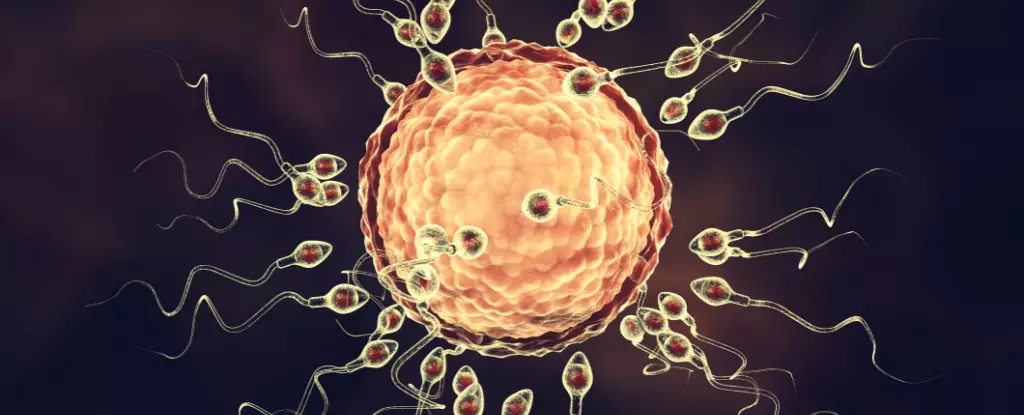Fertilization, the process by which a sperm penetrates an egg, marks a pivotal moment of transformation. In a matter of minutes, chemical changes occur within the egg’s membrane and outer coat, preventing additional sperm from entering. The intricate details of this molecular interaction have long remained a mystery. However, a recent study conducted by researchers at ETH Zurich and Ludwig Maximilian University of Munich has shed new light on the complexities of a protein complex crucial to the fertilization process.
The protein complex formed by JUNO and IZUMO1 has been identified as the primary link between male and female sex cells during fertilization. While previous studies suggest that this complex is responsible for initiating the recognition and adhesion process between germ cells, researchers suspect that there may be more to their molecular interactions than currently known. Attempts to develop molecular inhibitors for the JUNO-IZUMO1 union as potential contraceptives have yielded limited success, prompting researchers to delve deeper into their understanding of these intricate interactions.
Traditional techniques such as cryo-electron microscopy and protein crystallography have provided static images of protein structures and their interactions. However, these methods do not capture the dynamic nature of protein interactions within living cells. To overcome this limitation, Paulina Pacak and her team utilized a Swiss supercomputer to simulate the interactions between JUNO and IZUMO1 in a watery environment, more closely resembling their natural state within cells.
Each simulation lasted only 200 nanoseconds, yet it revealed the initial stabilization of the JUNO-IZUMO1 complex through numerous short-lived and weak non-covalent interactions between the protein molecules. These fleeting contacts, which lasted less than 50 nanoseconds each, hold significant potential for understanding contraceptive methods and infertility. By exploring the consequences of disrupting these interactions through other molecules or mutations, researchers can gain valuable insights into reproductive health.
Shortly after fertilization, the fertilized egg releases a surge of charged zinc atoms, believed to fortify the egg’s outer coat and prevent the entry of additional sperm. Simulations conducted by Pacak and her colleagues demonstrated that the presence of zinc ions caused IZUMO1 to adopt a boomerang shape, impairing its ability to bind firmly to JUNO. This suggests that the zinc release from the egg may also impede the binding of approaching sperm, further safeguarding against multiple fertilizations.
Although the findings presented are based on computer simulations using protein sequences and shapes, they offer invaluable insights into the initial moments of fertilization. The ability to observe these interactions in a simulated environment opens new doors for understanding the complex processes that occur during reproduction. Viola Vogel, senior author of the study and a biophysicist at ETH Zurich, aptly describes simulation as a tool that enables us to uncover these intricate details that would otherwise remain elusive.
The study conducted by researchers at ETH Zurich and Ludwig Maximilian University of Munich provides a deeper understanding of the complex interactions between sperm and egg during fertilization. By simulating protein interactions in a dynamic environment, the researchers have illuminated the initial moments of fusion and the destabilization that occurs when zinc ions are present. These findings pave the way for further exploration and potential breakthroughs in contraceptive methods, infertility treatments, and reproductive health.


Leave a Reply